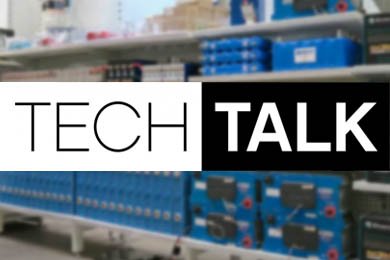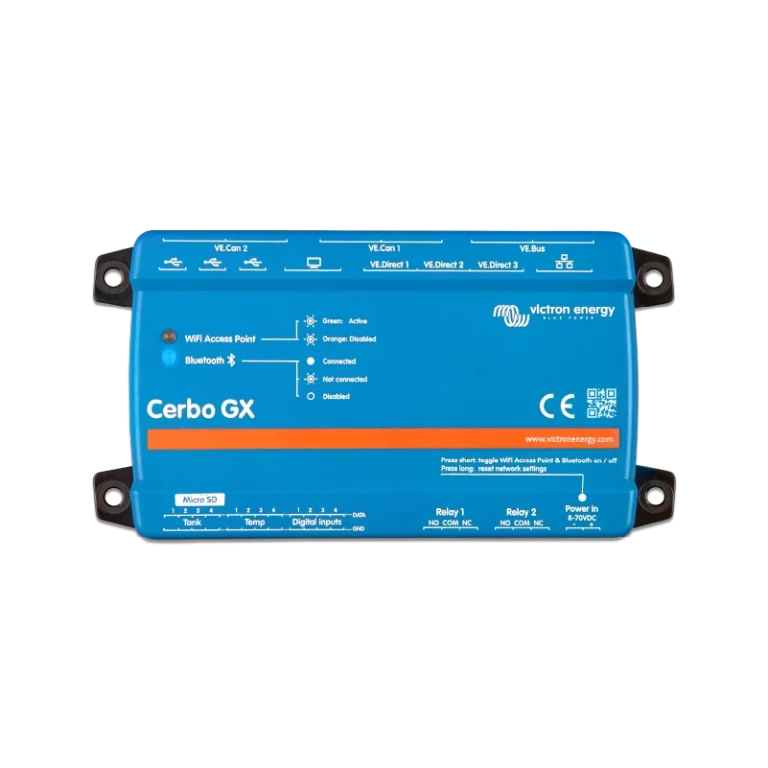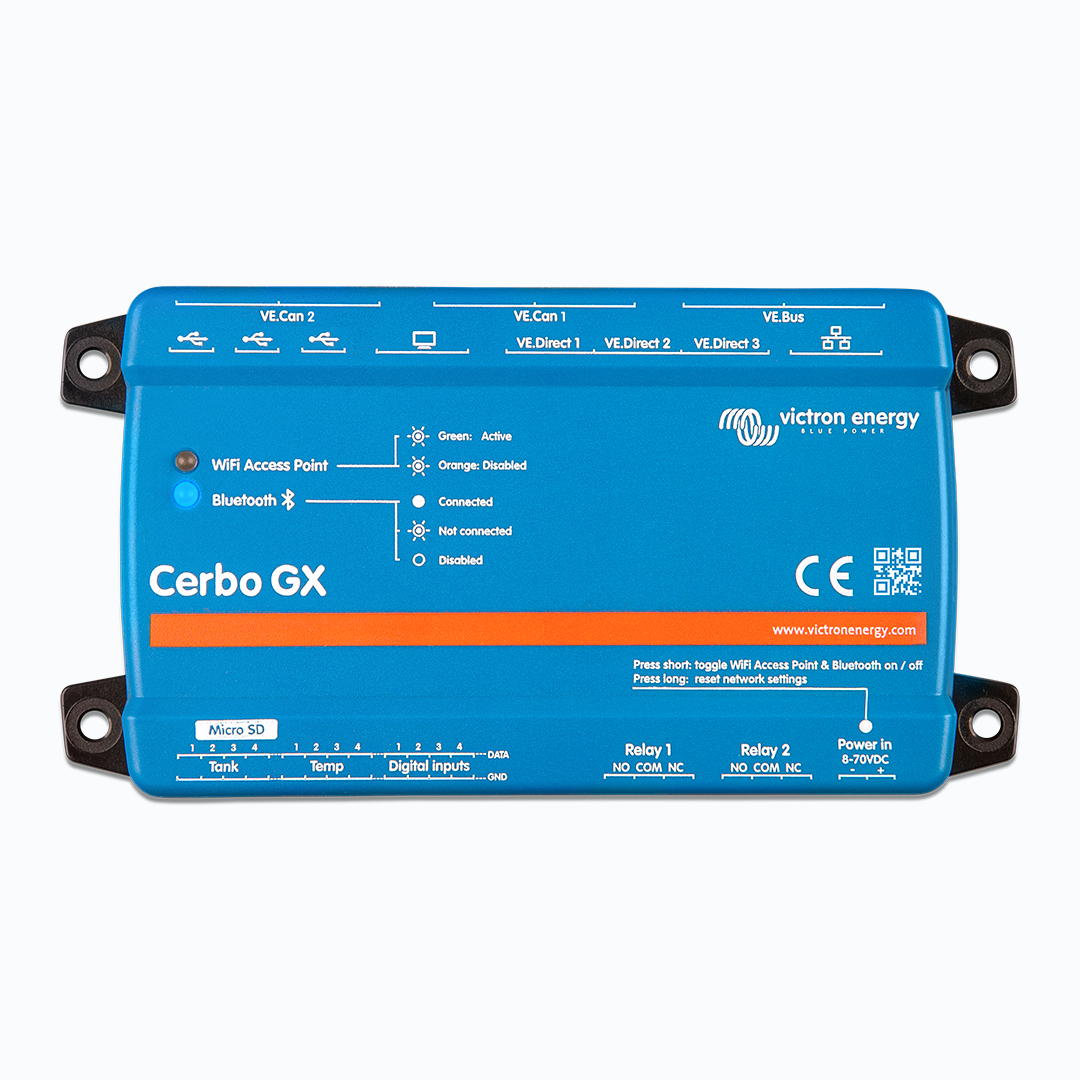Your cart is currently empty!
Category: Tech Talks

Victron Cerbo GX
Welcome to anther Tech Talk – where we will be talking about a featured product we are particularly excited about.
Featured product – The Victron Cerbo GX

Like all GX devices, this little blue box serves as the brains of your system. The reason we’ve fallen in love with this little guy? – The possibilities are endless. The Cerbo GX has inbuilt wifi and bluetooth, giving you full system monitoring on your phone via the Victron Connect app or on your computer halfway around the world, without running extra ethernet cables.
The Cerbo features the following interfaces:
- 4 digital inputs, which can be linked to anything from burglar alarms to smoke detectors.
- 4 temperature inputs.
- 4 resistive tank level inputs.
- 3 USB ports – GPS, keyboard, wifi dongles, memory and more!
- 2* VE Bus RJ-45 ports
- 4* VE CAN ports
- 3* VE Direct ports
- Ethernet port
- HDMI port
- 2 programmable relays
Aside from giving you full monitoring and control of your energy system, with interfaces for your inverters, solar controllers, battery chargers, battery monitors, smart shunts, energy meters and more
You can also program your system based on a whole range of other factors. You can shut down your energy system when a smoke alarm goes off. You can program it to maintain temperature or water levels, or to prioritize certain functions based on available energy.
Plug in a screen and a keyboard and you have your whole system on a computer.
See the full manual here: Cerbo GX Manual
Shop Cerbo GX

Solar panel wiring
When you have two or more panels, there are a number of ways to wire them up.
We are often asked – ‘What’s better? Putting our panels in series, or in parallel?’
(tl;dr at the end)
Series
Putting panels in series is just like putting battery cells in series – You plug the positive terminal of one panel into the negative terminal of the other. This adds the voltages together (so two 50V panels in series will give you 100V), and the Current from the two panels stays the same. Remember – Power is current multiplied by Voltage, so whether you put them in series or parallel, you are still getting the total power of Panel A + Panel B. There is a common misconception that more amps = more power, but this is not the case if it comes with a reduced Voltage.
Pros: In order for your solar controller to start charging, the Voltage from the panels must be higher than the Voltage of the battery system (In the Victron MPPT’s, at least 5V higher, but it varies from unit to unit). This shouldn’t be a problem with a 50V panel and a 12V battery, but on a cloudy day, early in the morning, and late in the evening, a higher Voltage is going to put more juice into your batteries, even if the total power of the panels is the same. (i.e. 400W of solar at 100V will give you more charge than 400W of solar at 50V, on a day when conditions are cloudy)
Cons: Series panels are very vulnerable to partial shading. Within the panel, your cells are also in series, so if you shade a single cell, it blocks some of the current going through the whole circuit, and the panel also starts to heat up which reduces efficiency. If you have two panels in series, it blocks the current going through both, so shading a single cell on one panel can dramatically reduce the output of the whole string.
(Note: there are various design features used in panels to mitigate the effects of partial shading such as bypass diodes and multi – busbar technology – so take this as a general statement)
Parallel
To put two panels in parallel, you put the two positives together, and the two negatives together. The most common way to do this is to use an MC4 double or triple branch adaptor (pictured), though the same behaviour applies if they are hard wired on the roof or if parallel strings are combined at a busbar closer to the solar controller.
Pros: If you partially shade one panel, it only reduces the output of that panel. Generally, partial shade won’t significantly decrease the output Voltage (depending on severity), so the shaded panel will continue to operate at reduced output and the unshaded panel will continue to operate at full capacity.
Cons: Under uniform low light conditions (cloudy days, early in the morning etc), your output Voltage will be reduced, which will limit charging.
Summary (Tl;dr):
No shade: Panels should go in series, as long as they stay 20% under the rated maximum voltage of the controller. Partial shade: Put them in parallel, as long as the output Voltage is going to be higher than your battery Voltage.
